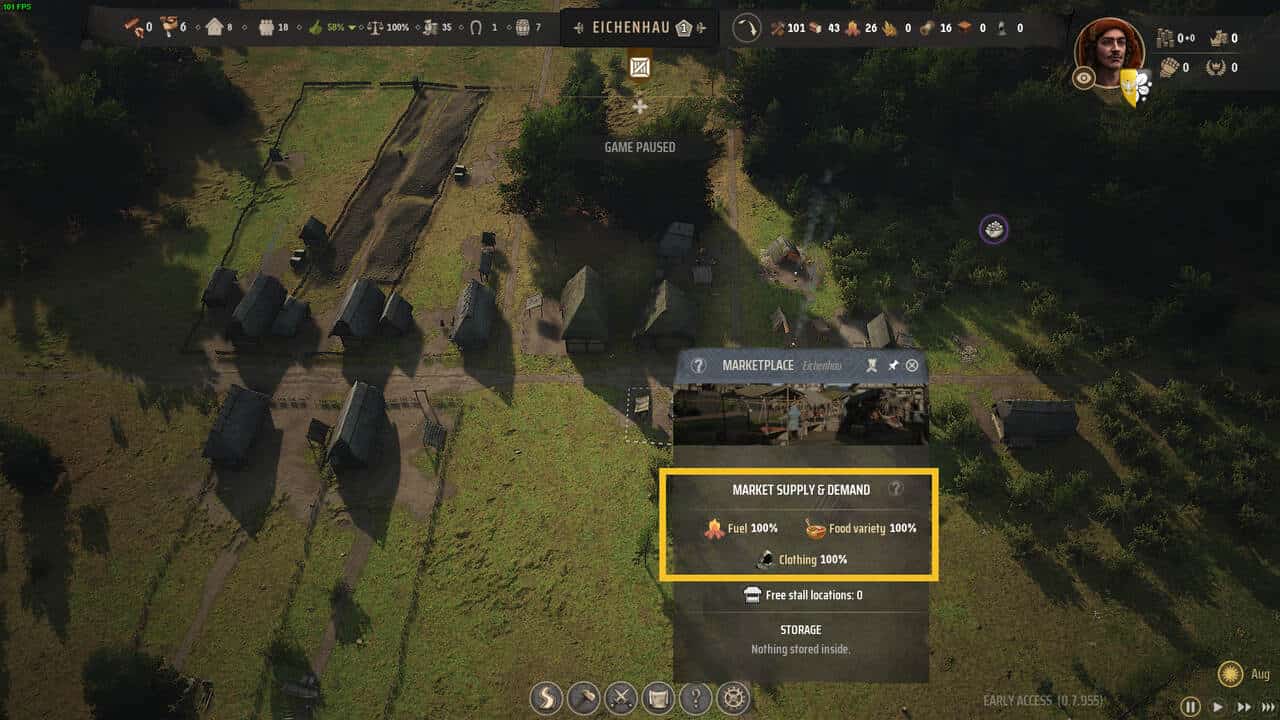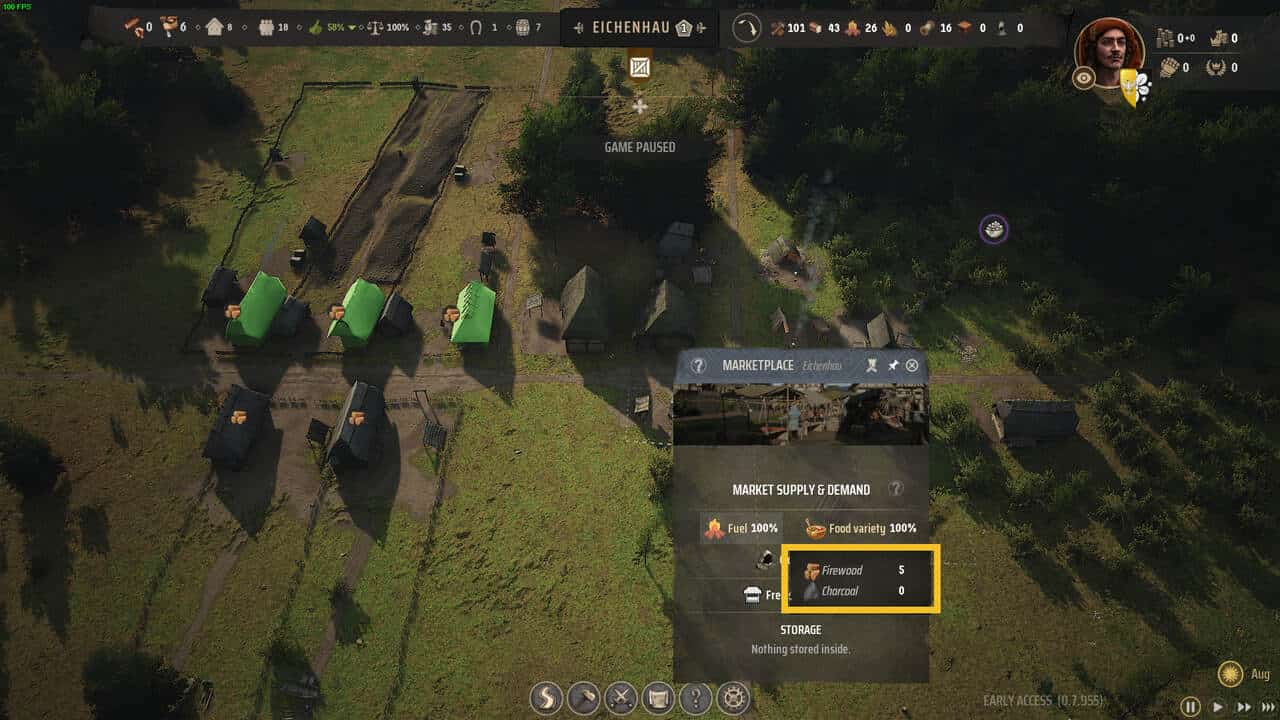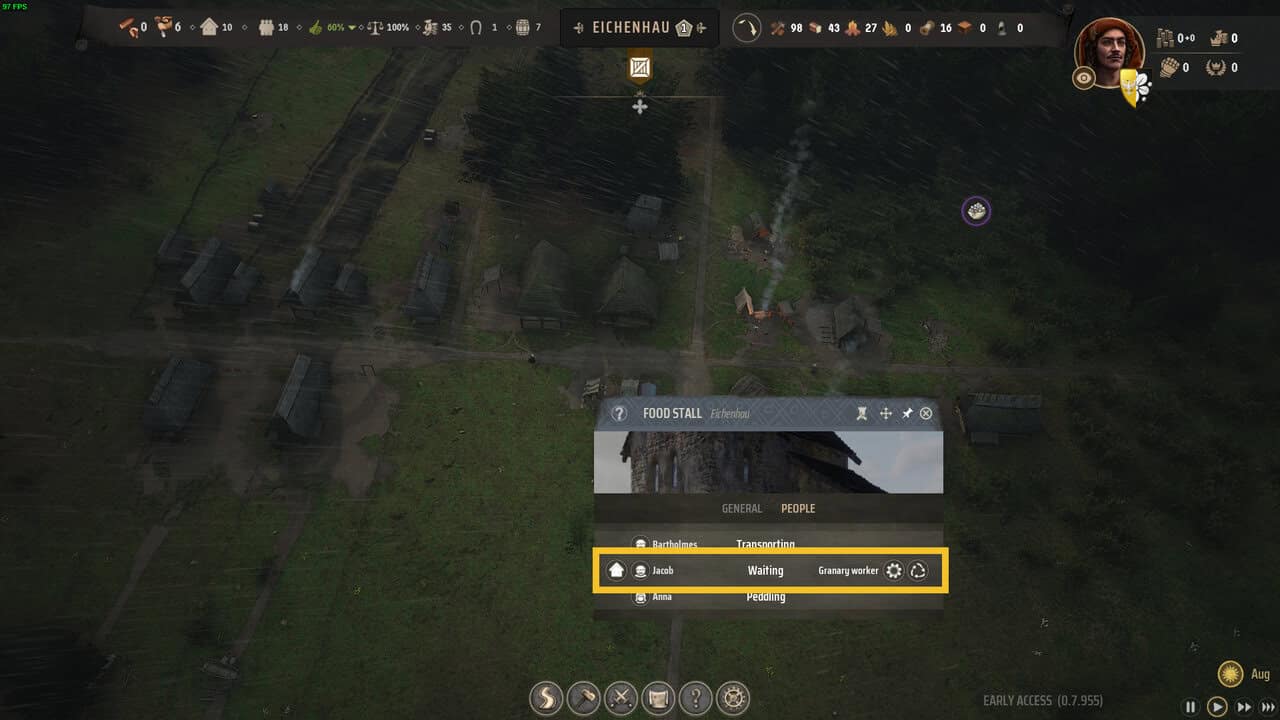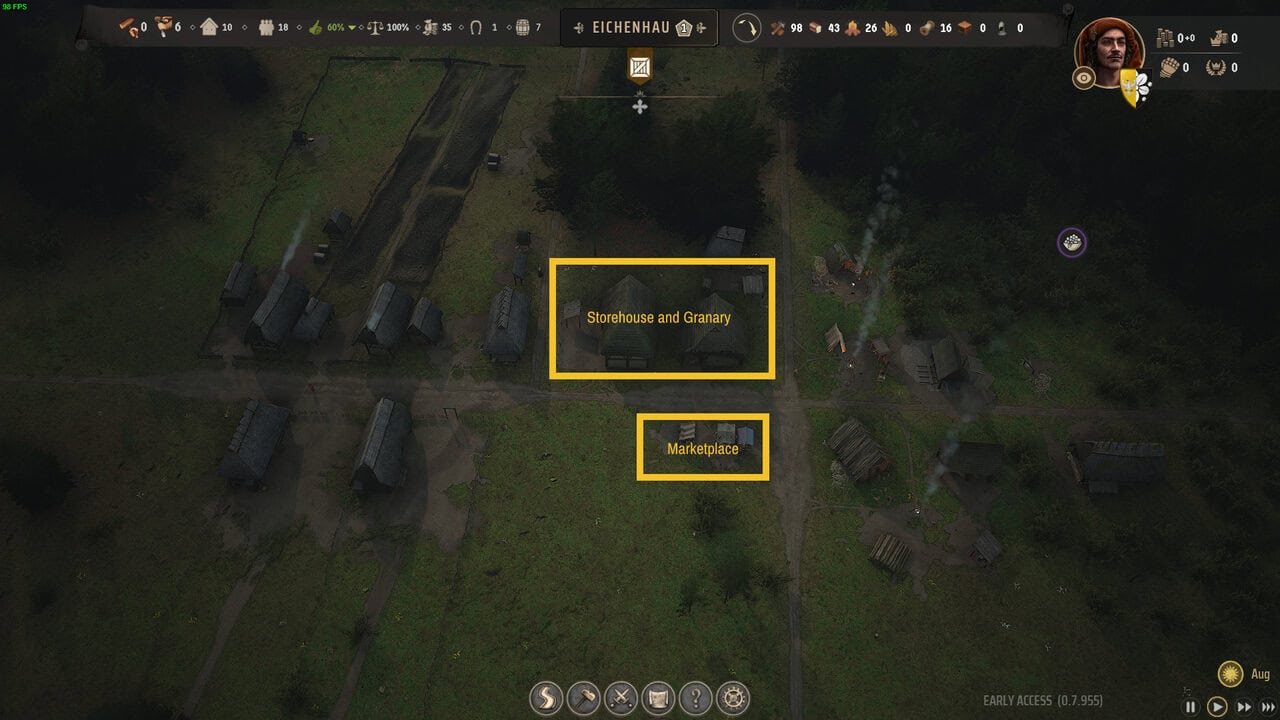Video Gamer is reader-supported. When you buy through links on our site, we may earn an affiliate commission. Prices subject to change. Learn more
In Manor Lords, the Marketplace is by far the most frustrating type of building to manage. Hitting 100% market supply and demand coverage can feel like toying with the dark arts because Manor Lords keeps its nuts-and bolts-logic very close to the chest. The Marketplace doesn’t work like in other games, nor does it have what’s considered a traditional range.
To help you make sense of it all, here’s a Marketplace range and placement explainer. It’s very much a work in progress as we’re still trying to get to grips with the subtleties of the system, but it’s a good starting point.

Marketplace range explained
A Marketplace in Manor Lords has an unlimited range in the region where it’s built. You could, for example, place a Burgage Plot at one end of the region and the Marketplace at the other, and it would still be in range as long as there’s a road connecting the two. Goods aren’t physically transported from a market stall to a Burgage Plot, but instead beamed there automatically, as long as the stall has stock. However, market stalls will always service the houses closest to them first, working to fulfil Burgage Plot needs from the closest the furthest. If you have enough stock to service all Burgage Plots, you’ll meet all requirements regardless of where the market stall is positioned in your region.
Stock is what’s important for a Marketplace, and more specifically, how far the family running a stall has to walk to replenish stock. For example, a Food Stall positioned next to a Granary will have an easier time keeping a full stock that one placed further away because the transport time from Granary to stall is shorter.

Put simply distance to a Granary/Stockhouse and transport time, and how these two factors correlate to stock levels, determine the effectiveness of a Marketplace. If the Marketplace is serving 5 houses but only has 4 Food, the fifth house won’t get any Food. So, if you have 10 burgage plots, you’ll need 10 of each type of food or commodity required by their level to satisfy their needs in market stalls.
In other words, even if you have months worth of Food and Fuel, these goods aren’t available from the perspective of the families living in your Burgage Plots if the market stalls aren’t stocked. Note that market stalls will only ever stock a maximum of any single good equivalent to the number of Burgage Plots in your settlement – 15 Burgage Plots so only ever 15 Firewood, 15 Leather, 15 Bread, and so on.

To solve this issue, you want the Granary and Storehouse workers to run the market stalls, not, for example, woodcutters, berry pickers, or tanners. This ensures the workers are dedicated to replenishing market stalls rather than only doing so occasionally because they are busy with other jobs.
If you click on a building, you can find out if a worker is running a stall if there’s a basket below their icon. Removing them from the building will have them abandon the stall allowing you to delete it. Add an extra family to the Storehouse/Granary and they’ll build a new stall in place of the one you just destroyed. That is, as long as there are no other workers that need a market stall to theoretically sell their goods. A good way to counter this is to remove all workers from all the buildings, then slowly add workers to your storehouses until their all running market stalls.
To further up the efficiency, you can also make sure that the Granary and Storehouse workers don’t live in Burgage Plots with basic Vegetable Garden extension, again so they aren’t distracted tending their plots instead of filling up market stalls.

Best Marketplace placement
When it comes to market placement, there are two schools of thoughts. The first recommends placement of your Marketplaces next to a Granary and Storehouse, but also very close to your Burgage Plots. Multiple small Marketplaces are better than one huge one. The ideal setup is a Marketplace with three stalls (Food, Fuel, and Clothing) for every cluster of 5-8 Burgage Plots. Note that you can also reposition market stalls like you would buildings like the Hitching Post, useful should you need to add a clothing stall to one of your marketplace clusters.
The second option is to position your Granary and Storehouse right next to a large, single Marketplace plot rather than several smaller plots. Proximity to Burgage Plots isn’t required. Staff up both the Storehouse and Granary with as many families as you can. Start with a small marketplace plot with space for three stalls (Food, Fuel, Clothing), the slowly expand and scale the size of the plot as your population grows to meet their needs.

